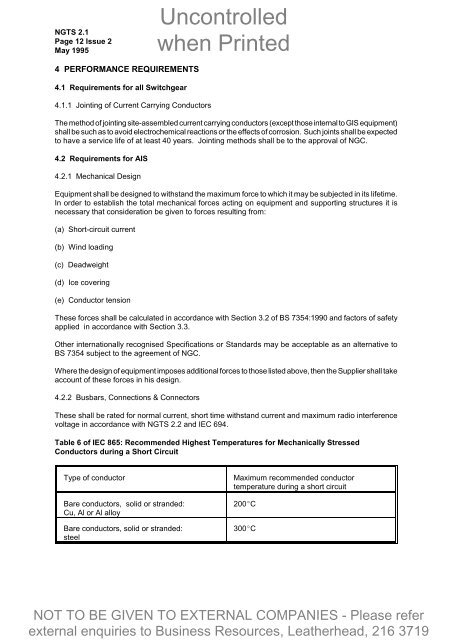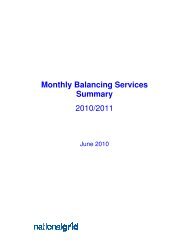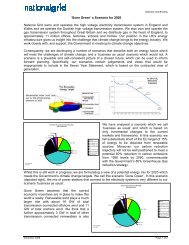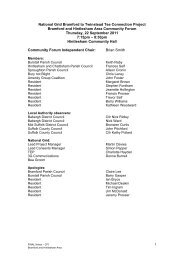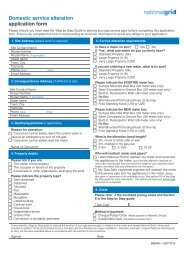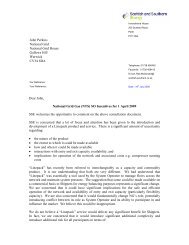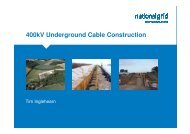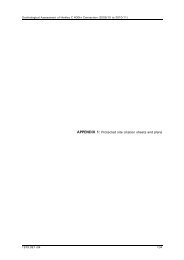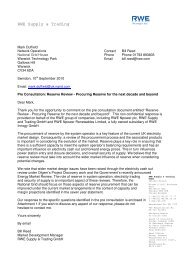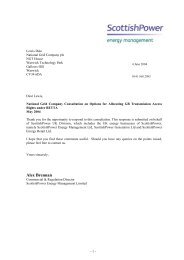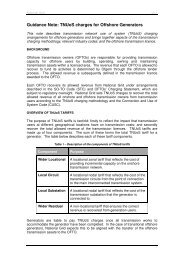Download PDF - National Grid
Download PDF - National Grid
Download PDF - National Grid
You also want an ePaper? Increase the reach of your titles
YUMPU automatically turns print PDFs into web optimized ePapers that Google loves.
NGTS 2.1<br />
Page 12 Issue 2<br />
May 1995<br />
4 PERFORMANCE REQUIREMENTS<br />
4.1 Requirements for all Switchgear<br />
4.1.1 Jointing of Current Carrying Conductors<br />
The method of jointing site-assembled current carrying conductors (except those internal to GIS equipment)<br />
shall be such as to avoid electrochemical reactions or the effects of corrosion. Such joints shall be expected<br />
to have a service life of at least 40 years. Jointing methods shall be to the approval of NGC.<br />
4.2 Requirements for AIS<br />
4.2.1 Mechanical Design<br />
Equipment shall be designed to withstand the maximum force to which it may be subjected in its lifetime.<br />
In order to establish the total mechanical forces acting on equipment and supporting structures it is<br />
necessary that consideration be given to forces resulting from:<br />
(a) Short-circuit current<br />
(b) Wind loading<br />
(c) Deadweight<br />
(d) Ice covering<br />
(e) Conductor tension<br />
These forces shall be calculated in accordance with Section 3.2 of BS 7354:1990 and factors of safety<br />
applied in accordance with Section 3.3.<br />
Other internationally recognised Specifications or Standards may be acceptable as an alternative to<br />
BS 7354 subject to the agreement of NGC.<br />
Where the design of equipment imposes additional forces to those listed above, then the Supplier shall take<br />
account of these forces in his design.<br />
4.2.2 Busbars, Connections & Connectors<br />
These shall be rated for normal current, short time withstand current and maximum radio interference<br />
voltage in accordance with NGTS 2.2 and IEC 694.<br />
Table 6 of IEC 865: Recommended Highest Temperatures for Mechanically Stressed<br />
Conductors during a Short Circuit<br />
Type of conductor Maximum recommended conductor<br />
temperature during a short circuit<br />
Bare conductors, solid or stranded:<br />
Cu, Al or Al alloy<br />
Bare conductors, solid or stranded:<br />
steel<br />
200bC<br />
300bC


